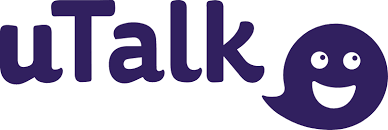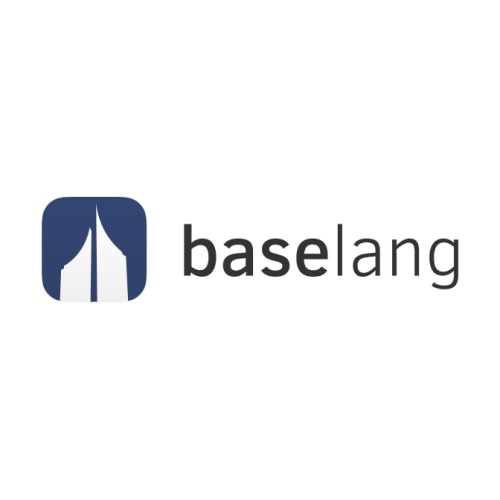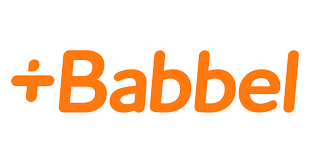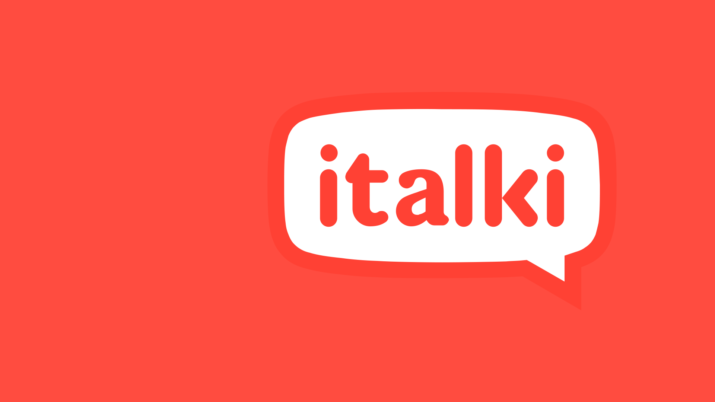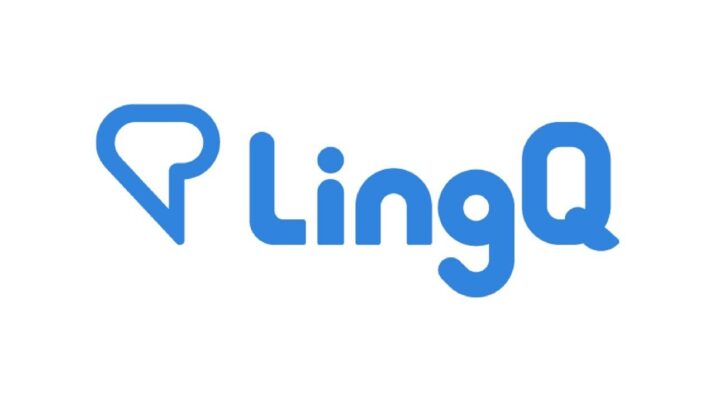Duolingo Review: Awful Experience In 2024
By J Maver
January 10, 2024 • Fact checked by Dumb Little Man
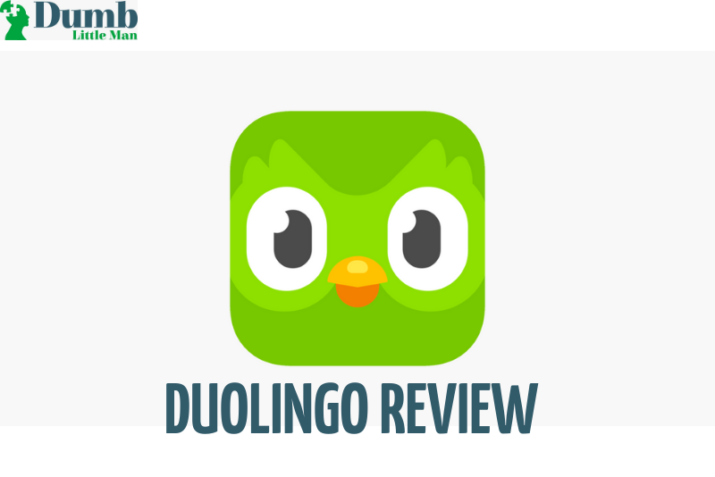
Learning a foreign language does not have to take place in a classroom in the modern world.

Image from theverge.com
With a mobile app in your hands, you may learn anyplace, time, anywhere at.
When you’ve been looking for one, you’ll probably certainly come across Duolingo, a free language learning app (also paid version).
In this article, I’ll explain why Duolingo won’t help you learn a language in just five minutes a day.
What about it? Since if you learn for 5 minutes every other day for 2 weeks, the number of languages you acquire per day is the same as the number you lose each day, and you will not make real headway.
Duolingo Review

Image from blog.fluent-forever.com
How Does Duolingo Work?
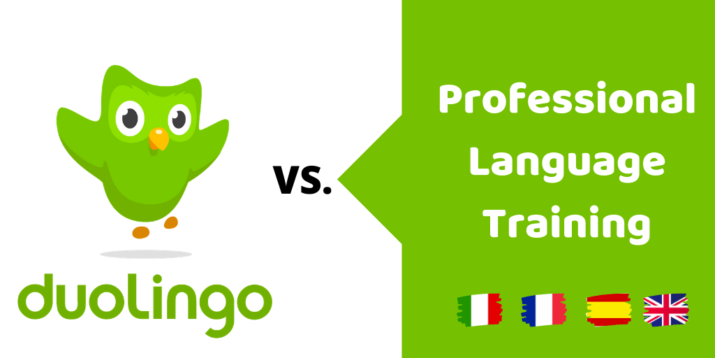
Image from pinterest.com
The user interface (UI) and user experience (UX) are both simple and appealing. The contemporary and innovative design creates an engaging and eye-catching experience.
Duolingo.com, like other language applications, allows you to create a free account.
To join up, follow these three simple steps: first, choose a language and a reason for considering it.
Then you choose between Casual (5 minutes), Regular (10 minutes), Serious (15 minutes), and Intense (15 minutes) as your daily objective (20 minutes).
Lastly, create an account using Facebook, Google, or any other email address.
You’ve finished creating a profile! The onboarding process will be completed in less than a minute.
After that, you may pick a language and start getting game-like bite-size tasks.
You will comprehend everything within only a few minutes. The entire user interface is simple and straightforward.
Duolingo is a platform and software for learning languages. According to the webpage, the tagline is “You can learn a language in five minutes a day.”
It also states that the classes have a monthly user base of 25 million people.
The first assertion is a falsehood, and the next one may be as well.
Duolingo lessons have converted dull language textbooks with ineffective teaching techniques in online games that just don’t help you learn a language very effectively.
What Is The Duoling App’s Foundation?
 Image from facebook.com
Image from facebook.com
Luis von Ahn, a successful entrepreneur, and his co-founder Severin Hacker launched Duolingo in 2009.
Von Ahn is well known for inventing the reCAPTCHA system.
It was and is an anti-spam device that site developers put next to forms that they didn’t want spammers on the network to fill up with worthless information.
People who utilized reCAPTCHA, according to Von Ahn, were assisting with the digitization of books with words that were difficult for machines to read when they were digitized.
It was a “massive-scale online collaboration,” he said.
CLICK HERE TO READ MORE ABOUT DUOLINGO
The Target Learners Of Duolingo App

Image from worldkings.org
Duolingo’s primary audience is learners who want to learn a new language from the ground up, with the goal of making education accessible to all.
Whereas the organizations consider “that everybody” to be their target audience. However, it is mostly aimed at a beginner’s level.
You must always begin with the first lesson. You cannot move to a different level if you feel a section is too advanced or rudimentary.
If you have any past knowledge of your chosen language and want to move to a better level, this course is not for you.
To summarize, Duolingo work is designed primarily for primary education, which is their target market. In obviously, the corporation will deny this, but it is the case.
What Is The Good Points Of the Duolingo App?
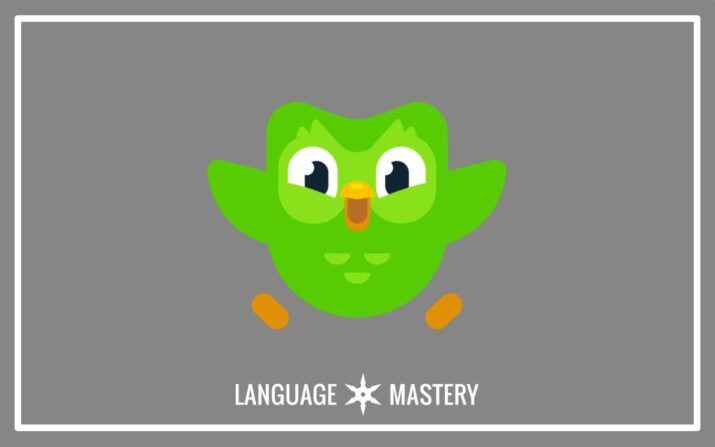
Image from languagemastery.com
1. Setting Targets and Receiving Notifications
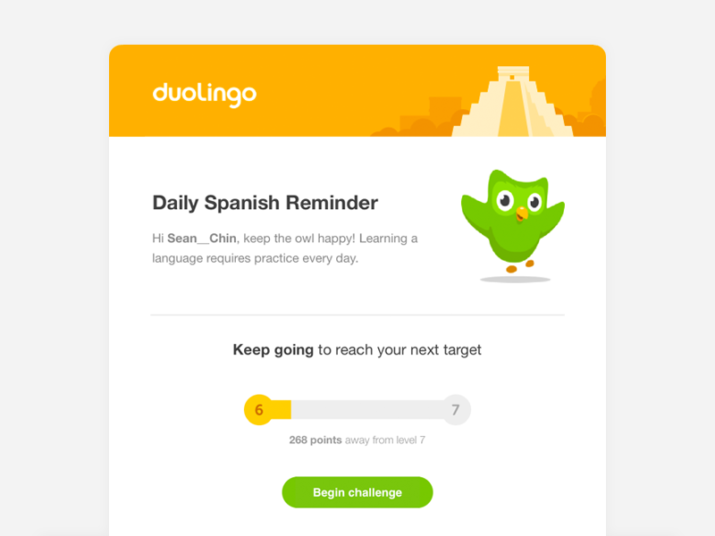
Image from dribbble.com
Duolingo’s owl, this unique signal has become a great enthusiastic tool for language learners.
Some customers have told us that they utilize Duolingo’s alerts to remind them to use our app, which is both amusing and smart.
We’re working on following up by adding reminders and other features, but it’ll be a while before we have a notification system as well-designed as that owl.
CLICK HERE TO READ MORE ABOUT DUOLINGO
2. Fantastic Creativity with a Fantastic Graphical Interface For Users
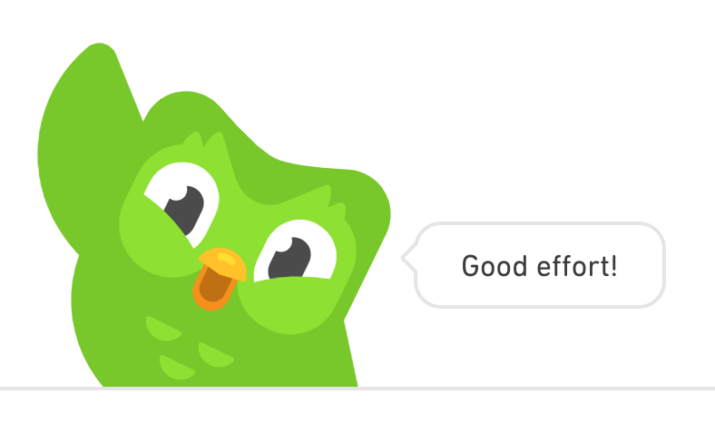
Image from forum.duolingo.com
Duolingo has put a lot of effort into developing techniques to make language learning more enjoyable so that you may enjoy your regular interactions with their program.
They’ve nailed the joy portions of app design, from their huge skill trees to their pleasant buttons to the regular cadence of “You did it!” and “Good effort!” success indicators.
Subscriptions (Free and Paid Versions)
1. Free Version

Image from happilyevertravels.com
Basic Duolingo is free to use and is sponsored by advertisements.
Duolingo’s one-of-a-kind selling point is that it is completely free. This is one of the main reasons for its meteoric rise in popularity.
You may get all of the information, stories, and benefits without spending a single dime.
It may be used on a mobile phone and will synchronize your progress across all of your devices connected to your account.
You may also use “Duolingo for Schools” to keep track of your kids. You may track their progress from your account once they’ve been added.
However, the tagline “It is possible to learn a language for free. Forever and ever “Is it true that learning language classes on the Web version will take you an indefinite amount of time?
“Forever” most likely does not imply “The light from the sun will rise in the east forever.”
It presumably implies something along the lines of “I’ll like you forever,” which is a much shorter version of “forever.”
2. Paid Section

Image from me.me
A $9.99 membership removes advertising, gives you downloadable access to courses, and lets you ‘rebuild’ a daily streak if you miss one.
The Plus membership comes with a few more perks:
First and foremost, the subscription is ad-free. You may get rid of the advertising while also gaining access to additional services.
The flip advertising that displays on your screen at random is annoying. But, as we do elsewhere, you may disregard it. You’ll lose interest in them after a while.
Last but not least, you get limitless hearts and online exams. It also fixes your monthly streak and gives you quizzes and a placement test to see how far you’ve come.
Duolingo Offers A Variety Of Courses
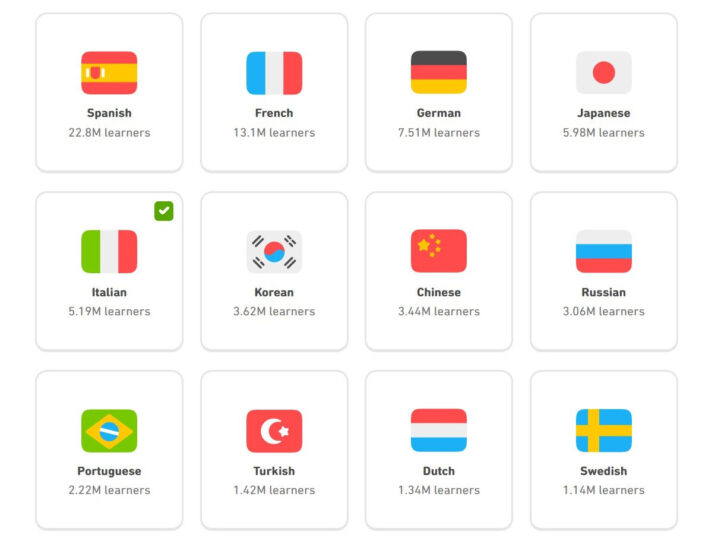
Image from duolingo.fandom.com
Duolingo works differ greatly based on the language you choose.
As an English speaker, for example, you may study Spanish with 29 million other people and French with almost 17 million other users have the same language target. You may even learn Romanian, which has a population of little over 500 thousand people in the same language.
The choices are limited in the case of Italian. Only English, French, German, and studying Spanish are available.
CLICK HERE TO READ MORE ABOUT DUOLINGO
Incubation Section Of Duolingo
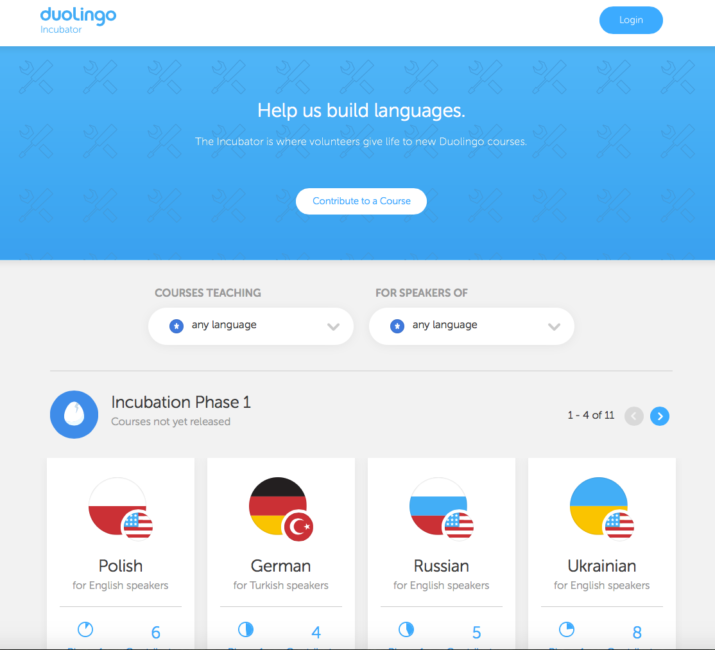
Image from duolingo.fandom.com
They’ve also established “Duolingo Incubator” due to a lack of alternatives for less prevalent languages and combinations.
This program enables people in the community to contribute to building courses in languages that aren’t already offered on the site.
Assume you are well-versed in and have a thorough in-depth comprehension of a certain order (both source and destination languages), as well as being willing to cooperate and be dedicated to the project.
From your registered account, you may apply for the same.
All user-generated contests are grouped into three categories, including hundreds of languages:
- Phase 1: No courses have been released yet.
- Phase 2: Classes go into beta testing.
- Phase 3: Classes are no longer in beta.
Duolingo was able to build all of these courses thanks to the help of hundreds of volunteers. They also assisted the business with word-of-mouth marketing.
While this provides welcome diversity, the quality of these shows varies greatly, at times dramatically.
With odd voices, the audio quality of the new words’ pronunciation might vary, making it difficult for many to understand. Unlike the official version, certain people are more susceptible to vernacular, dialects, and slang impact.
What Foreign Languages For Learners In Duolingo?
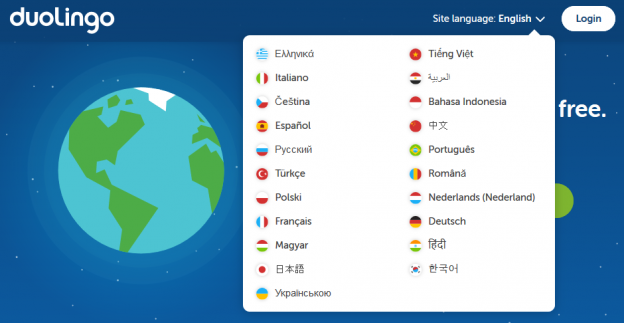
Image 13: https://ielanguages.com/blog/learn-two-languages-together/
In terms of context, Duolingo plans to provide 98 courses in 39 languages, outperforming virtually all other online language learning programs in the current market trend.
Learning Spanish, English, French, Russian, Hindi, German, also learning Chinese, Korean, and Japanese are just a few of the languages supported by the system.
Whether you’ve been searching for less often spoken languages like Danish, Catalonia, Scottish, Gaelic or Irish, or an endangered language like Hawaiian, Yiddish, or Navajo, Duolingo simply has it all.
Different Kinds Of Activities In Duolingo
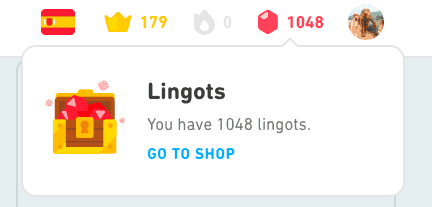
Image from happilyevertravels.com
It’s all about gamification at Duolingo.
Everything from the bright visual design to the aesthetically attractive images, progression bars, ticking, and clicking has been designed by them.
Duolingo podcast gives you experience points for learning (XP).
Personalized individual lessons, which occur in the form of, checkpoints quizzes, specialists development, all the words testing up, placement test, learning new vocabulary (new words), and storytelling in a few languages are all ways to develop your skills.
This will also help you improve your overall league position.
And while you’re at, it’ll encourage you to move on to the next section, though you shouldn’t count on it (more later). You will earn unassembled components, jewels, streak, and crowns as you progress through this repetitive nature trip.
The Gems/Lingots may then be used to purchase items such as streak freeze, double or nothing, heart refill, streaks wagers, Duo costumes, and extra abilities such as a few things like learning new words vocabulary, individual lessons, acquiring idioms, idiomatic expressions, verb conjugations, and flirting phrases.
CLICK HERE TO READ MORE ABOUT DUOLINGO
What Is The Mistake In Duolingo?

Image from b-m.facebook.com
1. Translating activities don’t help you improve your language abilities.
The most common tasks on Duolingo all require experimenting with language translation:
The translations are fairly simple to comprehend. Hola is the Spanish word for hello. Perro is a Spanish word that means “dog.” Easy.
It’s a really simple software to use in terms of understanding what to do or how to accomplish it.
It does, however, pose a number of severe concerns:
- Translations are tedious to learn;
- They’re really pretty difficult to remember over time;
- Translating phrases is difficult labor (there are cause translation occupations are classified as activities rather than hobbies)…
- Translation practice does not increase your ability to communicate a new language considerably.
That’s why I would not suggest you learn a new language with translation.
CLICK HERE TO READ MORE ABOUT DUOLINGO
2. Words are difficult to recall without adequate ear training
If you have any ear training before you started, Duolingo includes some simple ‘repeat after me’ or ‘type what you hear’ tasks, which would be good practice for teaching listening comprehension and pronunciation comprehension skills.
However, they don’t ever train you how to listen or produce the new sounds that appear in your target language, so you’ll have to struggle with those sounds each time they appear in a new word.
This isn’t a problem that gets better with practice, and exercises like “say this line” might actually teach you terrible pronunciation patterns that are difficult to break.
3. If you want to learn something, don’t learn from odd statements
Duolingo has a notoriety for assigning the most bizarre sentences to its users to interpret.
Learning vocabulary and strange phrases may be quite memorable at times.
However, some people will find working on statements like this to be painfully tedious and unpleasant because they think, “Wow, this is the least helpful sentence I’ve ever read.”
Other people, on the other hand, will find less strange phrases like “I run equipment in a factory” dull and irritating.
The issue isn’t really that Duolingo has strange phrases; it’s that Duolingo compels you to engage with sentences regardless of whether or not they’re a good match for you.
4. It is just fine to use modular building exercises
The tasks in Duolingo are very much fixed in stone.
You finish the exercises they offer you before progressing to the next level of the skill tree.
The text is given to you, and the images (if any) are supplied to you, and everything runs well.
In time, you are unable to gain your own language progress skills.
5. It is much more geared toward English speakers
You have a lot of options as an English speaker.
How if you really want to study Mandarin as a natural speaker of Hindi or Tamil, or dive into everything French as a fluent Japanese speaker?
However, you are not lucky.
Typically, you have one or two alternatives for multiple languages, with English being a popular choice.
The software is mostly targeted towards English speakers who want to learn another language, rather than speakers of other languages who want to study something other than English.
Perhaps they lack the necessary resources to produce these programs.
It’s also possible that it’ll be a difficult undertaking, given how many languages are more colloquial in character.
As a result, putting together such a combination solves a lot of localization difficulties.
Whatever the situation may be, your options as a non-native English speaker are limited.
CLICK HERE TO READ MORE ABOUT DUOLINGO
6. It is solely intended for beginners and not for advanced students
Duolingo isn’t a magical “cure-all” that will help you to learn any language quickly and easily with only a few clicks on your smartphone screen.
Even reaching an intermediate level of fluency is a pipe dream. This is one of the most significant issues with online language learning.
Everything starts and finishes at the most fundamental level.

Image from fluentlanguage.co.uk
For serious learners, Duolingo’s classes offer to leave much to be desired.
If you have a lengthy goal in mind, such as a profession that requires language skills, additional education overseas, or immigration, you should avoid it.
Consider enrolling in a language school, hiring an instructor, or using other resources such as books, audios, and video courses alternatively.
In all respects, give it a shot. However, I strongly advise you to keep your expectations realistic.
As a result, once you’ve finished the branch, you won’t be dissatisfied.
7. Duolingo Is Mostly A Game Version
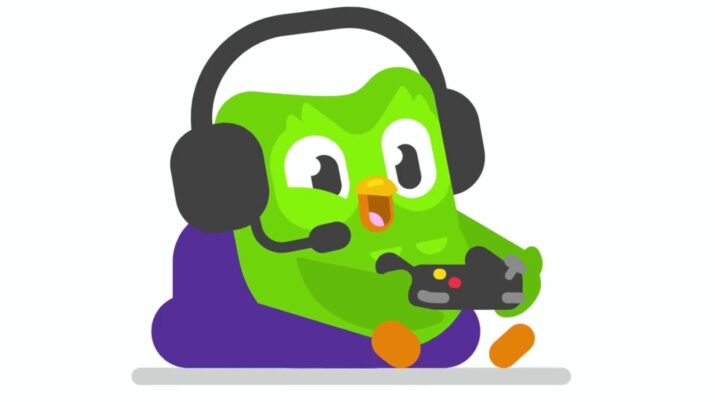
Image from desaraeveit.com
Learning a language is not at all like playing a game. The whole approach has been made into a game. There is some instructional value here, but not enough to make you want to study it.
They do not provide instruction on how to converse in the language.
I assume anybody can hold a conversation with a native speaker for more than 5 minutes, let alone order meals in a restaurant.
If you view a movie in that language without subtitles, you won’t understand anything.
They use a variety of words and phrases that, in the end, are insufficient to learn vocabulary and grammar skills for worthwhile.
At the end of the day, it’s all about winning the game.
8. You could only learn a limited number of words and phrases
You cannot learn a language only by using flashcards to practice particular vocabulary and phrases.
Duolingo makes topics like greetings, formal and casual, and often used phrases and vocabulary.
Further activities include commonly used nouns, verbs, tenses, adjectives, adverbs, and prepositions.
For sentence construction, there is no sufficient and appropriate grammatical explanation or norms.
Everyone understands that variations can be fruitful, but they aren’t enough on Duolingo.
They’re also terrible at teaching scripts that aren’t European.
If you want to learn Japanese, you’ll need to know Hiragana, Katakana, and Kanji.
You might be able to decipher Russian Cyrillic, Korean Hangul, or some Mandarin characters or Indian languages, but it’s quite doubtful that you’ll comprehend anything.
9. This Is More Appropriate For Children Than For Adults
Duolingo is concentrating more on animated characters and cartoons these days. It appears that they are mostly targeting teenagers.
Since the coronavirus spread in early 2020, the total number of users has increased from 300 million to 500 million.
School-aged youngsters, who have easy access to cellphones and computers, are primarily responsible for this strong rise.
Because most parents work from home, they are unconcerned about their children learning something new.
However, for people who wish to learn successfully, this is ineffective (is not the same thing with Rosetta Stone).
It will not help you improve your listening or speaking skills, nor will it explain the essential grammar rules (they do some sections on the desktop, though).
Also, it lacks natural-sounding dialogue and sounds more like a computerized voice. You won’t get a sense of how people actually say it in the real world.
The absence of intermediate classes and face-to-face engagement, such as recorded films, is a major letdown.
10. It’s really the Machine’s fault
It really doesn’t whisper, emotion, or say anything; it’s just blank. I’m staring at a blank canvas of text. For that, who learns a language? People are at the heart of languages.
I hope they would use bits from media broadcasts or real people’s recordings to play and work with.
Consider the significant efforts made in this field by Audio in Lingoda and Baselang, and you’ll realize that automated callous computer voices aren’t required in automated language education.
When I turn on Duolingo, I come to a point when I’m somewhere between bored and irritated.
Its robotic, basket style reminds me of the very worst aspects of school when students are simply placed in front of a multiple-choice test and forced to regurgitate everything they have previously stuffed into their heads.
This isn’t how you learn a language, and it’s certainly not how to get proficient at it.
I simply refuse to think that Duolingo can elicit the same level of enthusiasm as a book, a discussion, or a foreign television show. It doesn’t appeal to me personally.
CLICK HERE TO READ MORE ABOUT DUOLINGO
11. It’s because there aren’t enough explanations
Beginning with this language learning program requires you to make up your own reasons for why things are correct, as well as a lot of guesswork.
I have the impression that here is when “involvement” loses all meaning.
You learn simply repeating words in this software, without even touching on the foundation tales that grammar and pragmatics communicate.
I’ve seen a number of forum postings and letters from language learners who thought like they were losing their minds and were always asking themselves, “How am I doing this piece wrong?”
Duolingo could make us so much happy if it included grammatical references, even the most fundamental ones, as well as a viewpoint explaining why people say things the way they do.
I can’t see how any ego adult learner would place oneself in this infantile position of just accepting a robot’s word as law.
Learning a language should pique your interest, but this seems to want to turn you into a robot.
Surprisingly, the Tell Me More edition of Rosetta Stone has performed admirably in the area of explanation. Rosetta isn’t free, but I don’t think it’s similar.
Why Are People Still Love Duolingo If It Isn’t Very Good?
- Duolingo is a completely free app. Yes, you don’t have to pay a dime to learn whatever it is you’re passionate about. Who doesn’t enjoy getting something for nothing? Presumably, this is one of the correct answers.
- You may use it from anywhere, at any moment, and in any location. The platform’s user interface is also attractive, compelling, and straightforward.
- It is possible to learn many languages at the same time. This is hard to accomplish on other platforms, as well. Duolingo allows you to change languages with just a couple of clicks.
- It’s all about gaming here. It rapidly engages the learners’ minds and makes them enthused about learning. The excitement of completing the tree and earning the prize encourages you to utilize it more frequently.
Nevertheless, if you are a language learning person who aims for high-quality like to be advanced learners in your target language who experienced writing skills, practice speaking, or having a language teacher like native speakers, Duoling free resource is not the only option.
You still have many other online language learning resources would bring you better improvement, those below would give you some well-known recommendation for online language learning apps on Internet access that you can find on Google searches and study more than one language at your own pace.
Different Great Choices Of Language Learning App To Substitute Instead Of Duolingo
1.uTalk
Image from utalk.com
uTalk is an app for learning languages.
This software is available in over 140 languages.
uTalk is a tool that may be used in conjunction with other learning approaches.
And dual spaced repetition is the preferred language learning technique. uTalk’s primary benefit is that it can help you remember a small number of words.
Then you’ll proceed to increasingly difficult workouts, which will solidify those phrases in your good memory.
In programs like these, there’s a risk of putting too much emphasis on quantity over quality. uTalk, however, is not one of them.
uTalk does not pretend to be what it is not, and it provides everything needed to learn a language as advertised.

Image from flexiclasses.com
Cost: Each language costs $4.99 per month. All 140 languages are available for $9.99. A lifetime subscription costs $99.99.
CLICK HERE TO READ MORE ABOUT UTALK
2. Baselang
Image from dumblittleman.com
Baselang is absolutely acceptable. Aside from providing an unlimited number of Spanish lessons compared to Duolingo Spanish, the organization has a stellar record for keeping its commitments.
Students who want to learn Spanish who participate in this program will have access to well-designed instructional resources that will help them to improve and to learn Spanish communication skills like Spanish speakers.
The majority of the language educator in this program are really knowledgeable and helpful as well as native speakers.
Some previous encounters reviews with Baselang customer service have been excellent, as they were able to quickly resolve.
The firm has a good reputation and is run efficiently.
The Baselang curriculum is one of the most comprehensive in the world.
It has content for people of various ability levels, from beginners to experienced speakers.
The program includes a variety of alternatives that can help you enhance your vocabulary fast, in addition to grammatical training.
Because the language courses are so flexible, you can always zero in on the areas you want to work on.
It is okay to use your own resources if you choose to deviate from the curriculum and use your own language resources instead.

Image from crashedculture.com
Cost: 2 programs available include one for studying Real World Spanish and the other for preparing for the DELE Exam. The DELE Exam Prep program is $199 per month and the Real World curriculum is $149 per month.
1-week free trial also.
CLICK HERE TO READ MORE ABOUT BASELANG
3. Babbel
Image from dumblittleman.com
Babbel is a complicated structure with its own set of instructional content and exercises.
It has several features, tools, audio language courses, and a dedicated website.
It can be used in a variety of languages.
In contrast to the audience, the system is built and maintained by translators and professionals rather than members of the general public.
It works wonders for boosting listening skills. If you wish to use more features, you may upgrade to a premium membership.
The option to bypass levels is a nice feature of Babbel. Because it’s up to you to select the proper level for the folks you’ll be performing with, you may change the level’s challenge as you see fit.
Learning a language is often more enjoyable when it is interesting, and the accompanying word puzzles help the learner stay engaged. You might not want to go through each stage to figure out which one you excel in.
They include as is that it will allow more advanced language learners to break free from the previously limited linguistic framework.
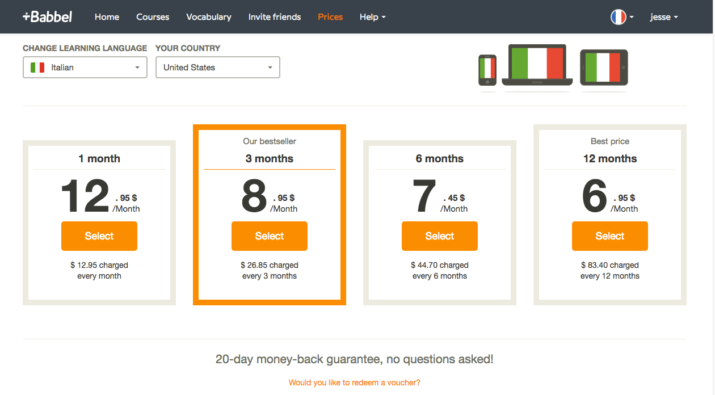
Image from livefluent.com
Cost: Babbel subscriptions commence at $12.95 a month.
When you pay for many months of access in advance, the monthly price drops about a year. Three months ($26.85), six months ($44.70), or a year ($83.40) are available.
CLICK HERE TO READ MORE ABOUT BABBEL
4. Lingoda
Image from crashedculture.com
Lingoda is a great app of language learning service for those who desire live lessons but wish to keep their schedules open.
Rather than redoing tasks, Lingoda customers may arrange one-hour sessions with genuine trainers at any time which can compare to Rosetta Stone.
Courses may be taken alone or in groups, and all instructors are fluent English speakers.
Unfortunately, just 4 languages are offered: Spanish, German, French, and English. It’s also more costly than other language learning applications, which charge around $10 for a class.
People who are committed to finishing their course within the time restriction, on the other hand, may be able to get a refund of up to 100%.
Students may try Lingoda for free for seven days with the Walk membership or with the Marathon subscription’s seven-day money-back guarantee.

Image from bestreviews.net
Cost: People who want a monthly membership should choose the Walk tier.
They can pick from weekly classes for $69 per month ($14 each lesson), weekly lessons for $169 per month ($11 for every lesson), or daily lessons for $289 per month ($10 each lesson).
This choice is also ideal for those who wish to test out the course for free, as it provides a seven-day trial period.
What Sets Lingoda Apart From The Competition?
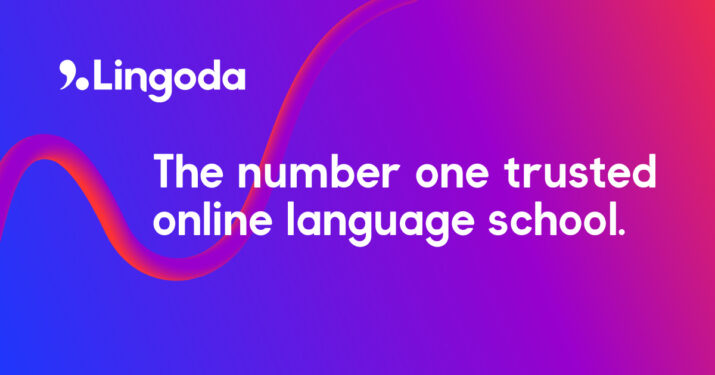
Image from lingoda.com
Small group lessons where you can hear and speak the language are where Lingoda shines.
It does not, however, provide a concurrent self-paced field of study.
That’s not inherently a bad idea, but it is distinct from other online language learning courses.
If you wish to study one of the languages it provides, Lingoda’s lessons are a great supplement to any mature language learning route.
It’s a PCMag Editors’ Choice winner for language learning.
It is available to those who are learning a language on their own via applications, as well as those who are already comfortable with languages due to familial or social exposure but want further training.
Lingoda allows you to talk and converse with actual people, which is an important step in learning any language, all while adhering to the Common European Framework of reference criteria.
CLICK HERE TO READ MORE ABOUT LINGODA
5.iTalki
Image from niviki.com
Italki is a language learning website that links students with tutors.
It claims to provide “basically any language” – including English, Cantonese, French, Portuguese, German, Japan, Koreans, Persian, Hindi, Italian, and Russian to Tagalog, Thai, and Turkish – and claims to have over 10,000 professors and 5 million students.
Tutors and students meet for one-on-one sessions through video call, most frequently Skype, on Italki.
The majority of Italki instructors are focused on helping you improve your conversational abilities via chatting. (It’s named Italki, and besides).
You may also discover Italki teachers that can provide you with tailored courses according to your requirements.
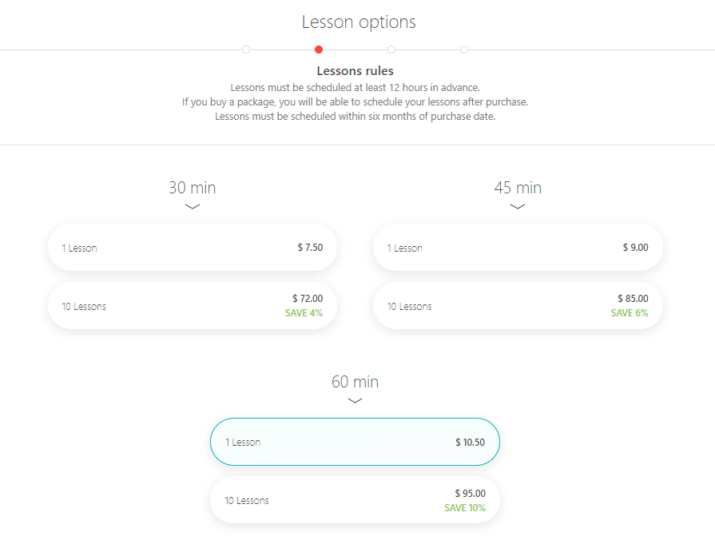
Image from heyexplorer.com
Cost: Teachers on Italki establish their own prices.
There is a $4 minimum price and an $80 maximum price.
Filters can help you discover an instructor that suits your budget if it’s $10 per hour or $50 per hour.
Generally, I look for instructors who are on the lower end of the salary scale.
I usually pay $8 per hour for a conversation class and $12 per hour for courses.
You’ll get three 30-minute trial classes at a discounted rate if you’re a new Italki user. I’ve received trial offers of as little as $2. Take advantage of the opportunities.
CLICK HERE TO READ MORE ABOUT ITALKI
6. Preply
Image from en.wikipedia.org
Preply is a virtual learning system that provides language learners and instructors from all around the world together for one-on-one online courses.
Preply began as an online marketplace for Sat / Act tuition in 2012, but as its company grew worldwide, it transformed into an online learning system training platform in 2013.
Preply now has 49,000 instructors on its list and 100 topics (plus languages) accessible as of 2021.
Preply has a large number of tutors, and this number is continuously increasing.
Choosing a suitable instructor for whatever subject or language you wish to practice is a snap with such a vast pool of tutors.
Due to Preply’s fast and straightforward Search engine, I was able to locate a teacher I liked in minutes.
Preply will not provide any instruction. It just serves as a conduit for you to access its online database of instructors.
You may go through each tutor’s profile, view their introduction videos, and sort them by cost, ranking, specialization, and accessibility.
As a result, instructors on Preply rely on favorable feedback from students, thus providing solid, high-quality courses is critical. This is comparable to Italki and other systems.

Image from thelanguagequest.com
Cost: The cost of each instructor on Preply varies greatly, ranging from $5 to $40 per hour.
The instructor may establish their personal fee, although prices are typically determined by the tutor’s particular experience, credentials, and ratings.
Tutors have established an average fee range of $10-$15 per hour, according to my research.
CLICK HERE TO READ MORE ABOUT PREPLY
7. LingQ
Image from ankiweb.net
Steve Kaufmann built LingQ (pronounced “link”), a language learning platform with a plethora of auditory and written content.
LingQ bills itself as an “online language learning community,” and after you join, you can use it to locate a cultural exchange companion.
Spanish, German, French, English, Chinese, Japanese, Portuguese, and Italian are among the 14 languages offered by LingQ. As of this writing, ten more languages are under the testing phase.
I regard LingQ as the Swiss Army Knife of language acquisition after using it for a few months as part of French studies.
It gathers all of the language study tools you could imagine (and much more) into one convenient location.
As a result, you may utilize LingQ to enhance your abilities in the following areas: Reading, Writing, and Listening skills. And building a Vocabulary for Speaking skills.
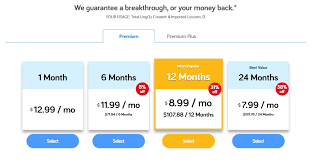
Image from languagethrone.com
Cost: Premier membership fee $12.99 per month, $71.94 per half-year, $107.88 per year, $191.76 for two years, and $199 for a separate lifetime subscription.
CLICK HERE TO READ MORE ABOUT LINGQ
Conclusion

Image from reuters.com
Supplement Duolingo is a very well and easy language learning program available, and it is completely free.
Even though this is a bit hit-or-miss. If you become stuck at any point, there won’t be an adequate explanation.
I hope you found this Duolingo review sensible strategy in making your selection. The overall impression of Duolingo was negative. This isn’t intended for serious students.
You can take it out if you’re still undecided. At the very least, there’s no harm in giving it a shot.
But just don’t expect to acquire significant proficiency with Duolingo by doing a few digital flashcards exercises for 5 to 20 minutes a day.
May the most well-known language learning software is Duolingo. However, it is simply intended to teach some basic abilities. Expect little more than a rudimentary understanding.
In reality, if you’re just starting out with a new language, my advice is to avoid making Duolingo your first visit since it’ll almost certainly make you want to stop you from intermediate level.
There are a plethora of low-cost options to begin learning a language on the mobile app, but ensure glad you keep something in a position that is truly beneficial, not simply because you get 200 worthless scores on an app daily basis.

Image from facebook.com
About many other language learning apps (even a free app in limited time) that I mentioned above, in my honest assessment, Lingoda should be considered as one of the best choices for a learner from beginners to advanced with a high target in learning a foreign language.
Classes are designed to be as comprehensive as possible, with as much instruction given in the target language as feasible.
A spokesperson from Lingoda verified that the English and Business English sessions are as intensive as possible and that a language of instruction is not required.
Before a session, students can check the instructor’s bio to discover what additional languages they comprehend. I would recommend you to try Lingoda out on these language learning platforms.
That’s why if you are a person who has a purpose that you want to be an expert in a foreign language, be sure that you take a look at all the free language learning app and paid to learn foreign language applications for mobile app and website also in order to find out which one is the best suitable for you in your learning path.
J Maver
Passionate in tech, software and gadgets. I enjoy reviewing and comparing products & services, uncovering new trends and digging up little known products that deserve an audience.

